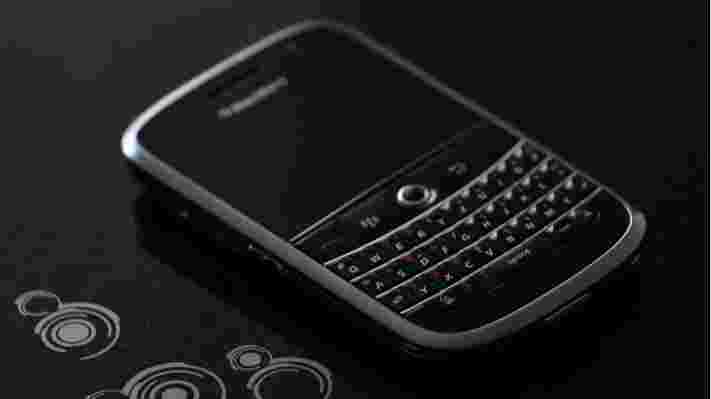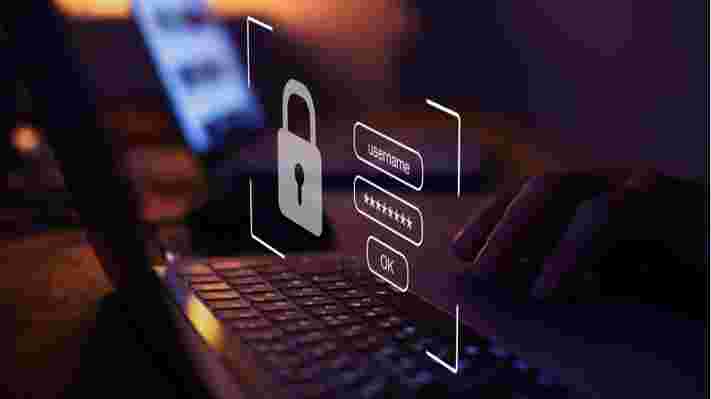New horror movies were few and far between amid the pandemic-induced chaos of 2020, but last year offered up some genuinely brilliant scary flicks.
In the below list, we've highlighted the biggest new horror movies worth looking out for as we move through 2022 – from returning franchises like Predator, Halloween and Jeepers Creepers to mysterious original projects like Jordan Peele’s Nope and Alex Garland's Men.
We're regularly updating our picks with new entries and revised release dates whenever relevant, and we've also included the new horror movies hitting streamers like Netflix, Disney Plus , HBO Max and Hulu in 2022, too.
Men
When? May 20, 2022
Where? Theaters
Okay, this one might not technically turn out to be a horror movie, per se, but Alex Garland's upcoming psychological thriller, Men, still looks like it bears the hallmarks of a typical freaky flick. Not much is known about the premise of the A24-produced project, though newly anointed Oscar nominee Jessie Buckley (The Lost Daughter) leads its cast as a widow on vacation in the English countryside who encounters an unwanted pursuer (or several) in the form of Rory Kinnear's Geoffrey.
Judging by the director’s previous work (Ex Machina, Annihilation) film fans are in for a head-spinning (albeit beautifully shot) journey into the human psyche with this one, which looks like the lovechild of Hereditary and The Green Knight .
Jeepers Creepers: Reborn
When? TBA, early 2022
Where? Theaters
After Scream and Netflix's Texas Chainsaw Massacre, another reboot – though perhaps from a less well-known horror franchise – is hitting theatres in 2022 in the form of Jeepers Creepers: Reborn. It’s being directed by Timo Vuorensola, from a screenplay by Sean Michael Argo, and is intended as the first in a planned trilogy set apart from the first three movies of director Victor Salva. We're expecting its "early 2022" release date to mean sometime between April and May.
The Black Phone
When? June 24, 2022
Where? Theaters
Fresh from starring as the villain in Marvel's Moon Knight series, regular horror movie actor Ethan Hawke reunites with Sinister director Scott Derrickson for supernatural thriller The Black Phone. This one tells the story of an abducted child who, using a mysterious phone, hears the voices of past victims that help guide his escape. We're intrigued, to say the least – especially given the involvement of horror super-producer Jason Blum (The Purge, Get Out, Happy Death Day).
Nope
When? July 22, 2022
Where? Theaters
Get Out and Us director Jordan Peele’s next movie stars Daniel Kaluuya, Keke Palmer and Steven Yeun as “residents in a lonely gulch of inland California who bear witness to an uncanny and chilling discovery.” The movie's first trailer – which features horses, aliens and Yeun in a cowboy hat – gave us a better understanding of that premise, though we're still relatively in the dark as to what strange (and inevitably terrifying) story Nope will tell. Expect the unexpected from this one.
Prey

When? TBA, 2022
Where? Hulu, Disney Plus
Expected to be the fifth instalment of, and prequel to, the Predator franchise, Prey will follow the famous creature's first journey to Earth. 10 Cloverfield Lane director Dan Trachtenberg has signed on to direct, while Amber Midthunder, Dakota Beavers and Dane DiLiegro are all confirmed to star. No Arnie, though, unfortunately. Original titled Skulls, Prey will be coming to Hulu and Disney Plus exclusively, and 20th Century Studios has set a provisional "summer 2022" release date (that's between June and September, for our Australian readers).
Salem's Lot

When? September 9, 2022
Where? Theaters, HBO Max
Yet another Stephen King story is headed for the big screen. Having been adapted into a two-part television miniseries of the same name in 1979, Salem's Lot will hit theaters this October. King's 1975 novel tells the tale of an author who, upon returning to his childhood home, discovers that his town is being haunted by a vampire. Bill Camp, William Sadler, Lewis Pullman and Makenzie Leigh are all attached to star in the movie, which is being helmed by Annabelle Comes Home director Gary Dauberman. Warner Bros. has also confirmed that Salem's Lot will hit HBO Max 45 days after its theatrical release.
Halloween Ends

When? October 14, 2022
Where? Theaters
A direct sequel to Halloween Kills – which arrived in October 2021 – Halloween Ends will (supposedly) end the long-running franchise almost exactly a year later. We expect Michael Myers and Laurie Strode to both return, though, which begs the question: was Halloween Kills actually necessary? Expect some near-misses and (another) cliff-hanger ending.
Hellraiser
When? TBA, 2022
Where? Hulu
One movie we didn’t expect to get a reboot in 2022 was Clive Barker’s 1987 British supernatural horror, Hellraiser. This updated version will again be based on Barker's novella, The Hellbound Heart, and its existing film adaptation, so will almost definitely see the return of Pinhead and his group of sadomasochistic beings known as the Cenobites.
Evil Dead Rise
When? TBA, 2022
Where? Theaters, HBO Max
One more reboot? Sure, why not. Evil Dead Rise will become the fifth instalment in the Evil Dead franchise, and will follow two sisters trying to survive and save their family from demonic creatures. Alyssa Sutherland, Lily Sullivan, Gabrielle Echols, Morgan Davies, Nell Fisher and Mia Challis are all confirmed to star, while Spider-Man director Sam Raimi will serve as executive producer alongside Irish filmmaker Lee Cronin.
How does Elden Ring play on the Steam Deck?
Both Elden Ring , the new game from FromSoftware, and Valve's Steam Deck handheld console/PC hybrid were launched at the same time, and both are highly anticipated releases.
Perhaps most excitingly of all, Elden Ring can be played on the Steam Deck, and it launched with a Steam Deck verified certification.
This means it should run well on the Steam Deck, with default settings ensuring a good level of performance, compatibility with the Steam Deck's control scheme and text that's legible on the Steam Deck's 7-inch 1280 x 800 screen.
Best of all, if you bought Elden Ring for your PC via Steam, it means you can play it on the Steam Deck without buying it again, and thanks to cloud saves, you can pick up where you left off, no matter what device you last played it on - as long as you have an internet connection.
With two big launches coinciding, we were keen to see just how well Elden Ring runs on the Steam Deck, and if it's worth picking up for the handheld.
Default settings
As we mentioned earlier, Elden Ring should run well on default settings. This is set to 'Maximum' graphical settings, and right away we were impressed with how good the game looks on the Steam Deck's screen.
It's seriously impressive having a handheld games console that can run a game as large and as ambitious as Elden Ring. Cloud saves also did their thing, allowing us to carry on from where we left the game on a desktop PC.
However, when loading the game we were unable to connect to the Elden Ring servers. This means that online aspect of the game are currently unavailable on the Steam Deck. That means no messages from other players, or co-op help when taking down bosses. It's not the end of the world, as Elden Ring remains a predominantly single player experience, but it will impact your enjoyment.
The good news is that Valve is aware of these issues and is working on a fix. Hopefully by the time you read this, or shortly after, those server issues on the Steam Deck will be sorted. But, like we said, this does not affect cloud saves.
While Elden Ring looked great at default settings, performance wasn't as good, with us averaging 28fps when playing. This is just under the 30fps we'd like to see as a minimum. Dropping the graphical settings down to 'High' gave us around 33fps on average, which was much better, and the game still looked fantastic.
This meant Elden Ring was indeed perfectly playable on the Steam Deck, but you're going to have to settle with 30fps. This is fine, but the game is really designed for 60fps play, and after playing it at 60fps on a PC, going to 30fps on the Steam Deck did make the game feel sluggish.
But, there is an undeniable thrill at playing a game of this scope on a handheld, and while we couldn't see ourselves playing the entire game on the Steam Deck, it's a great option for having a quick blast when you're away from your PC. Anyone finding themselves addicted to Elden Ring may want to get their hands on a Steam Deck.
The game controlled well on the handheld as well. As this is a third person action game designed for gamepads, the action translated well to the Steam Deck's controls.

Battery woes
Battery life remains a concern, however. In just 10 minutes of play time, the Steam Deck's battery dropped by 7%, and it estimated a lifespan of one hour, 43 minutes, which seems about right to us.
This means long play sessions are out of the question unless you have a power adaptor (and plug socket) nearby. We've seen the Steam Deck's battery struggle with intensive games like God of War , so this doesn't come as a huge surprise, but anyone planning on playing Elden Ring on the Steam Deck during a long flight, for example, will be disappointed.

Impressive, but not perfect
Overall, the performance of Elden Ring on the Steam Deck was pretty good. It was great being able to continue our game on the handheld, and although it was basically locked at 30fps, it was perfectly playable - and looked fantastic.
However, we do recommend putting the graphics to 'High' for a better experience. If you get used to playing Elden Ring at 60fps on PC, then going to 30fps on Steam Deck will be a bit of a blow.
But, considering the hardware involved, and the convenience of playing the game on a compact handheld, this is a trade-off that is worth it, and is probably one we're going to have to get used to with AAA games on the Steam Deck.
Saying that, it's still early days for both Elden Ring and the Steam Deck, and future patches for both could improve performance quite drastically. There were times when the game got quite stuttery - but that also happened on our powerful RTX 3090-powered PC, and going by online reports, it seems this is an issue with the game, which FromSoftware is working on addressing.
For Elden Ring obsessives who can't put the game down, the Steam Deck will certainly give you your fix, but just keep your expectations in check.
The transformation of BlackBerry from mobile heavyweight into something else entirely
Many people know BlackBerry as the company behind the iconic range of mobile devices, which were as beloved among regular consumers as they were the professionals they were built for.
However, BlackBerry hasn’t been a hardware company for more than half a decade now. Although the firm has licensed its branding to other manufacturers, it hasn’t launched a smartphone of its own since 2016.
The company also recently killed off BlackBerry OS , rendering a host of older devices unusable, and sold off a range of legacy patents relating to its phones and other technologies.
Instead, the modern BlackBerry is all about software and cybersecurity . The firm’s primary source of revenue is a line of services that help secure mobile devices and various other endpoints, and software that enables rich functionality inside connected vehicles.
According to Sarah Tatsis, an executive who has spent more than twenty years at BlackBerry, the pivot away from hardware was more natural than it might appear.
“There were quite a few challenges, because it was a big transition, but there was also a lot of opportunity,” she told TechRadar Pro .
“From the beginning, there has always been a focus on cybersecurity at BlackBerry. We’ve always thought a lot about how to move data through our infrastructure in a secure way. And that know-how is applicable across many different spaces.”
The fall from grace
At the peak of its powers around 2010, BlackBerry held more than 40% of the mobile device market in the United States and roughly 20% of the global market, Comscore and Statista data shows.
This level of ubiquity was thanks in part to the quality and design of the devices – the Pearl, Curve and Bold series were all hits – but also to exclusive services like BlackBerry Messenger (BBM), access to which became something of a status symbol.
BlackBerry should also be recognized for its role in driving forward the remote working revolution. The company’s devices were among the first to allow users to browse and respond to emails on the move, which had the effect of unshackling professionals from their office computers .

The arrival of the iPhone in 2007 is often said to have marked the end for BlackBerry devices, but the company was actually able to hold its own for a number of years after iOS and Android rose to prominence. In other words, people were still content with their BlackBerry hardware.
According to Tatsis, the company’s fall from grace had more to do with software. The most significant mistake, she says, was BlackBerry’s failure to establish a marketplace for third-party applications, like the Apple App Store or Google Play Store.
“The key problem was the lack of applications available on our devices versus others at the time. We didn’t have the platform that a large application ecosystem provided,” she explained.
In 2015, BlackBerry eventually moved its phones over to Android in an effort to rectify the dearth of apps, but by that time its competitors had muscled their way into favor.
But there were other mistakes, too. For example, the company stuck doggedly to the physical keyboards for which it was best known, underestimating the flexibility of the touchscreen and value of the additional screen real estate.
BlackBerry was also insistent on maintaining its focus on the business market, despite the broad appeal of its devices. Although BlackBerry phones remained popular among businesses and government agencies, pressure from workers to support iOS and Android devices ultimately forced the hand of IT departments.
Squeezed out of its main market by new players who had more accurately identified the areas of opportunity, BlackBerry was left with no choice but to pivot.
The rebirth
The switch from hardware to security was the brainchild of John Chen, who took on the role of CEO at BlackBerry in 2013.
When it was first announced that the company would exit the hardware business, Chen unveiled a three-pronged strategy; BlackBerry would licence its branding, embed its technology into non-BlackBerry smartphones and extend its software to help secure the growing number of IoT endpoints.
As it transpired, the third of these objectives became the foundation for the new-look BlackBerry. Following the acquisition of security company Cylance, renowned for the quality of its AI-based solutions, in 2019, BlackBerry threw its weight behind its cybersecurity business with even greater conviction.
Today, the company offers a dizzying selection of endpoint protection and mobile device management services that utilize AI techniques to help companies protect against sophisticated cyberattacks.

It also runs a threat intelligence operation that analyzes developments in the threat landscape, from the latest malware strains to state-sponsored espionage activity. BlackBerry says the objective is to maintain an up-to-date picture of the kinds of threats its software needs to shield against, and to collaborate with the security ecosystem in support of shared goals.
Although Tatsis has held many roles in her two decades at BlackBerry, her latest position seats her in the IoT segment of the business, as SVP IVY Platform Development. Separate to the security services arm, her focus is on “building the foundational software that enables endpoints in a secure and scalable way,” she explained.
The IoT segment’s most well-known offering is BlackBerry QNX, which is now embedded in almost 200 million connected vehicles, from the likes of BMW, Volkswagen, Mercedes and Ford. The platform powers functionality ranging from safety and driver assistance systems to infotainment, in-car acoustics and more.
The IVY platform operates in a similar space, “focusing on enabling automotive OEMs to bring to market new experiences for customers”, says Tatisis.
Co-developed with AWS and currently in early access, IVY connects up to various sensors within a vehicle (e.g. seat sensors, optical sensors, battery management systems etc.), then plugs the data it collects into machine learning algorithms that generate insights that help inform the driving experience.

For example, IVY is capable of using a combination of data feeds to identify precisely who is in the car, knowledge that unlocks a wide range of possibilities.
“If I have the insight that Sarah is driving the car, I can send that insight to an application that can provide a personalized driving experience,” Tatsis explained. “That could involve playing Sarah’s favorite music, adapting the predicted range based on her driving style and more.”
In another hypothetical scenario, IVY could detect that children are present in the car and nudge the driver to activate child-lock systems. Understanding that the car has multiple occupants, IVY could also send up a flag that permits the vehicle to use high-occupancy vehicle lanes (HOVs).
It’s easy to look back on BlackBerry’s legacy in mobile and wonder how the company ended up here, but there remains a thread that connects these latest pursuits to its origins: a focus on security.
By performing computation on the edge and transporting only abstract insights to the cloud , IVY is able to minimize the exposure of personal data and lay the foundation for next-generation experiences with security baked in.
Who needs hardware, anyway?
Few companies have undergone a change of identity as complete as BlackBerry’s. And even fewer have managed to do so successfully.
Although BlackBerry was forced out of the hardware business by a failure to follow the opportunity, Tatsis believes the company is now ideally positioned to capitalize on the direction of travel.
With the number of IoT devices and connected vehicles expected to continue to expand at an aggressive pace, both cybersecurity and advanced new functionality will feature at the top of the agenda, she suggests.
“As the number of endpoints and sensors grows significantly, so does the risk from a cybersecurity and privacy perspective,” Tatsis told us. “To enable the innovations and great new experiences we expect to come from these endpoints, it’s vital that they are able to operate in a secure manner.”
“We’re really excited about where we’re going as a business. It’s all about helping to innovate and create solutions that help people and businesses remain secure and productive. These two key areas of IoT and cybersecurity are really what will be needed in the future for many of these endpoints.”